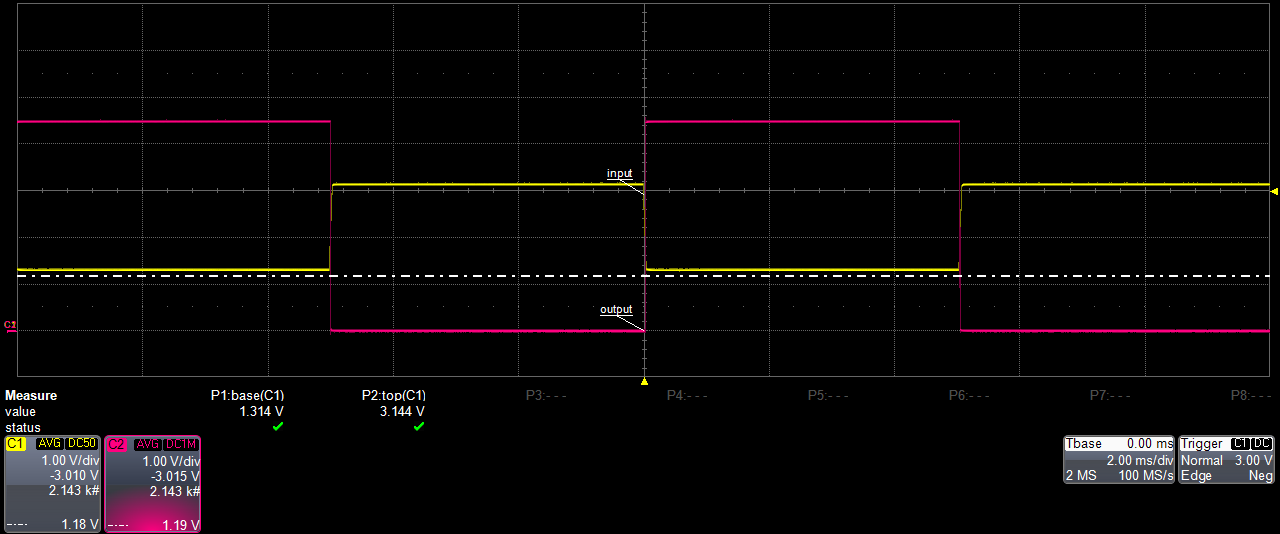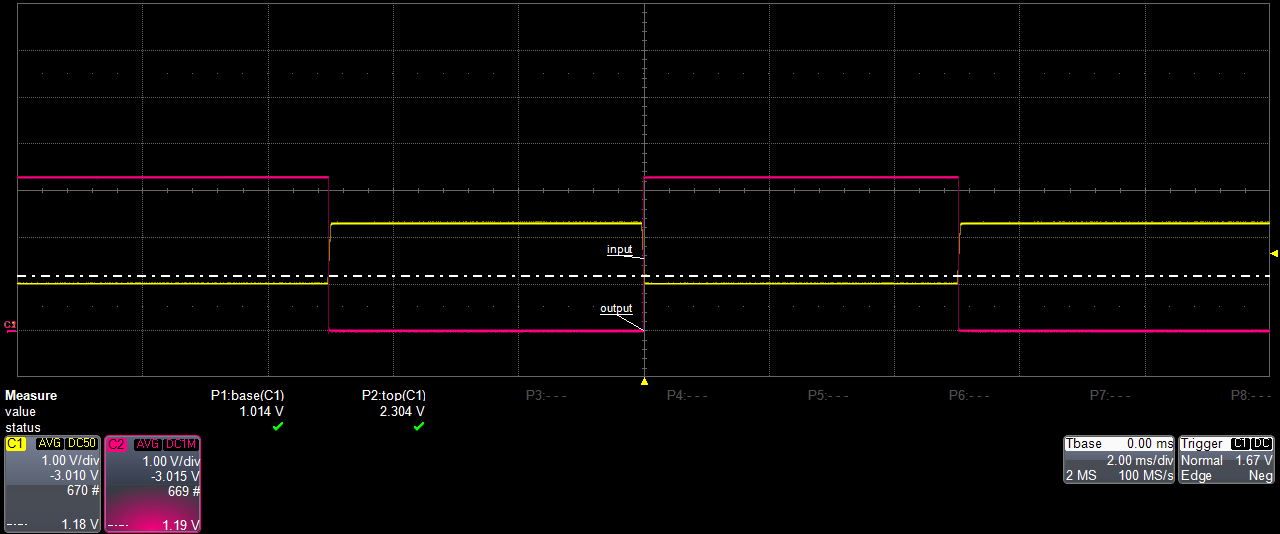We use SN74HC240DWR chip and I recently tested the input behavior and found the Low-level input voltage to be 1.320V at 5V supply voltage.
The measurement was taken at a 1K Ohms SMT resistor at frequency of 2 Hz with 80% duty.
(So the measurement was not directly on the chip input - but on the separating 1K resistor, where my function generator 50 Ohm output was connected. Voltage measurement was verified to be accurate.)
The datasheet shows the Low-level input voltage to be MAX at 1.35V at 4.5 Vcc. Subsequently I measured Low-level input voltage on another device to be higher, at a lower Vcc!
This surprised me. At the same measuring setup, with 1K resistor and Vcc = 3.3V - the Low-level input voltage was 1.420V. Why is this happening?
The datasheet is SCLS128D − DECEMBER 1982 − REVISED AUGUST 2003 shows progression on the Low-level input voltage in function of the Vcc (see table page 3)
So why aren't the devices behaving like that? Did anything change about those chips since the datasheet was made in 2003?
If so - what are the input differences? Specifically - what are the values of the Low-level input voltage for Vcc of 3.3V and 5V for those newly produced devices?




